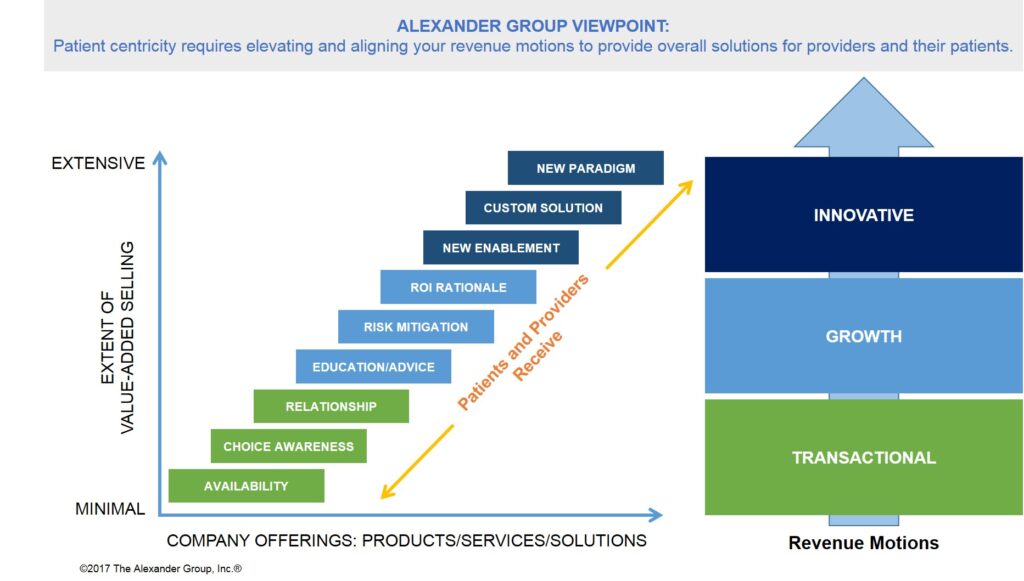Medical Devices
A Practical Guide to Maintaining Patient Centricity
Author


Doug Beveridge
Principal
Patient centricity–keeping benefits to patients a primary concern–within the medical device industry remains key for companies seeking to build long-term trust and loyalty with their customers. To move beyond concepts and vision statements for this go-to-customer model, medical device organizations should consider adopting the following practices when selling to medical providers and their patients:
- Move Beyond Transactional Selling and Start Adding Value
Both patients and providers want to understand how a company’s particular medical product fits within their particular ecosystem. For the prospective patient, this might entail providing educational information or video testimonials from current patients regarding ease of use or lifestyle impact of the product. For providers, this may mean sharing key data points such as patient reductions in hospitalization or efficacy data for a particular patient population of interest. In other words, marketplace differentiation demands moving beyond transactional revenue motions that support product awareness and availability to ones of risk mitigation and ROI rationale. (See Figure 1) At times, the desired shift requires re-thinking job roles, competency models and the behaviors rewarded through a company’s incentive compensation program. Similar shifts with our high tech and industrial manufacturing clients offer further support for this trend.
Figure 1
- Patient Experience Matters
When designing and benchmarking the patient journey, look to industries outside of medical for insights and innovations concerning the overall patient experience. For example, recent studies in the banking industry indicate those with the greatest investment in digital enablement consistently lead their peer group in customer experience rankings. Prospective patients judge their experience based on interactions they have with companies in their everyday lives, from coffee shops to online shopping. Medical device companies can learn from the successes and mistakes of these other industries and apply them to their own customer experience where appropriate. Carefully investigate and map out all potential customer interactions by channel and across channels to ensure a holistic and consistent experience. Maintain the experience by regularly checking in with employees on the front lines (e.g., digital sales, sales representatives) as well as the patients and providers themselves. Finally, consider establishing a patient experience function within your organization to objectively monitor, measure and advocate for the patient/provider experience and collect patient feedback. - Change the Way Success Is Measured
Maintaining a patient-centric model demands re-thinking success measures. As an industry, medical companies certainly do not suffer from a lack of available data. An incredible amount of investment and energy go into validating, matching and using data for metrics such as share of voice, new prescribers, prescription volume, units and others to understand the state of the business. In a patient-centric model, Alexander Group recommends instituting a similar effort to capture and report a set of patient success metrics to live alongside the traditional metrics: for example, estimating total days on therapy, total lives saved, hospitalization days reduced or life-saving treatments administered. Clearly, the metric chosen will not be perfect and will need to align with each company’s particular product portfolio. However, the more companies can bring the concept of helping patients into everyday conversations about performance, the more they can drive patient-centricity throughout their organization.
The Alexander Group understands the challenges and benefits of evolving go-to-customer models and of mitigating and measuring the change. Contact us to learn how we can assist you in becoming a more patient-centric organization.